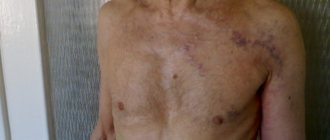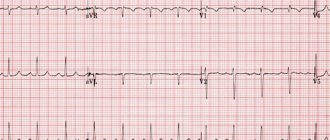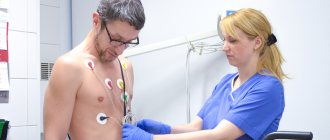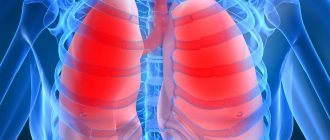Author's rating
Author of the article
Green Elena Stanislavovna
Otolaryngologist of the second category
Articles written
665
about the author
Every person encounters such a symptom as cough quite often. But sometimes it can be accompanied by shortness of breath, which is very dangerous. When the patient coughs, severe wheezing can be heard and shortness of breath appears. Before starting treatment, it is worth understanding the cause of the cough. Coughing and shortness of breath can signal the development of serious illnesses.
Mechanism of symptom formation
In the overwhelming majority, it is coughing attacks that are the source of lack of air. Due to cough and bacteria on the mucous membrane of the respiratory tract, very severe irritation appears. And the air becomes the same pathology as bacteria. For this reason, it pushes out air along with mucus and phlegm. And as a result, the patient simply physically cannot take a breath and severe shortness of breath appears. The stress that a person experiences in this case further aggravates the situation and shortness of breath becomes stronger. The state of lack of air is also called dyspnea. How it is formed:
- virus or bacteria enter the mucous membrane of the respiratory tract;
- swelling of the bronchi develops, spasms begin;
- the volume of mucus increases;
- the body, with the help of a dry cough, tries to get rid of phlegm;
- it is difficult for a person to breathe, there is not enough air - shortness of breath appears.
Such symptoms may indicate the development of bronchitis or asthma. In a healthy person, when you inhale, oxygen comes in, and when you exhale, carbon dioxide comes out. But with pneumonia, asthma or other respiratory diseases, obstacles arise. The blood does not receive enough oxygen and breathing becomes difficult. In addition to coughing, shortness of breath can also cause the following symptoms:
- increased heart rate;
- strong fear;
- shortness of breath;
- yawning;
- fainting.
Depending on the disease, these symptoms may vary in duration.
Shortness of breath with dizziness and weakness are important symptoms of many diseases
A patient’s complaints that it has become “difficult to breathe” are periodically heard by a doctor of any specialty, because breathing problems are, to one degree or another, inherent in a variety of diseases and conditions.
A feeling of lack of air, or shortness of breath, can accompany severe physical fatigue, stress, and obesity.
If shortness of breath is accompanied by dizziness and weakness, sometimes sweating and other unpleasant symptoms, this can be a harbinger of serious internal diseases.
We breathe - we don’t breathe: when shortness of breath is dangerous
Shortness of breath is a complex process of the body’s response to breathing problems and oxygen deficiency (photo: sportobzor.ru)
Usually a person does not pay attention to how he breathes. But if the breathing frequency, its rhythm, the depth of inhalations and exhalations are disturbed, a feeling of lack of air immediately appears, which is called shortness of breath. Dyspnea can be inspiratory - when it is difficult to inhale and expiratory - when it is not possible to exhale completely. The extreme degree of lack of air is characterized as suffocation.
The physiological essence of shortness of breath is that there is a lot of carbon dioxide in the blood and little oxygen. Nerve signals about oxygen deficiency reflexively enter the respiratory center and cerebral cortex, which respond to these signals as follows:
- muscle spasms occur - blood vessels constrict and a cough develops, the heart rhythm is disturbed;
- the cerebral cortex regulates sweating, and in the event of nerve impulses about excess carbon dioxide, it shows sweating;
- the absorption of blood glucose is impaired - the person feels shortness of breath with dizziness and weakness;
- from a lack of oxygen, the production of many proteins, hormones, enzymes is disrupted and fatigue develops.
The reasons for the imbalance in the balance of oxygen and carbon dioxide may be related to environmental conditions: stuffy room, thin mountain air, high physical activity. Various neuroses, stress, and hysterics disrupt uniform breathing and oxygen supply.
Shortness of breath can be caused by diseases of the cardiovascular, respiratory, nervous systems, provoked by anemia, high acidity of the stomach and diabetes, other diseases and conditions when life often depends on the timely restoration of breathing.
Sometimes shortness of breath is combined with other symptoms - fatigue, weakness, sweating, dizziness. The doctor must take them into account to determine the causes of shortness of breath.
Shortness of breath and lungs: the most dangerous symptoms
Shortness of breath with bouts of unproductive coughing and weakness may indicate bronchial asthma (photo: du57cneppq1sd.cloudfront.net)
Impaired breathing accompanies all diseases and conditions associated with the bronchi or lungs. The most dangerous of them is the entry of a foreign body into the respiratory tract, which can cause suffocation and, without immediate medical attention, lead to death.
Other problems that cause shortness of breath and weakness are usually associated with inflammatory or tumor processes in the bronchi and lungs, which disrupts their normal ventilation and makes it difficult for a person to breathe:
- infectious diseases (bronchitis, pneumonia). Intoxication joins the inflammatory process, therefore, along with shortness of breath, rapid fatigue, weakness, sweating, lethargy, and chest pain appear;
- pneumonia – the causes of shortness of breath and weakness lie in inflammation of the lung tissue. It is difficult for the patient to inhale and exhale, the process is accompanied by a strong purulent cough and high fever;
- bronchitis – shortness of breath is characterized by difficulty breathing due to inflammatory swelling of the bronchi, muscle spasm in the bronchial walls and accumulation of mucus;
- bronchial asthma - manifests itself as severe shortness of breath, especially when in contact with allergens, when air is easy to inhale and difficult to exhale;
- chronic obstructive pulmonary disease - severe shortness of breath and weakness, associated with a narrowing of the lumen of the bronchi, due to which air is easily inhaled, but difficult to exhale;
- lung tumor – has characteristic symptoms in the form of hemoptysis and constant hacking cough. Shortness of breath is accompanied by weakness, lethargy and exhaustion.
The causes of shortness of breath can be various damage to the respiratory muscles. For example, with scoliosis, poliomyelitis, fungal infection of the lungs (actinomycosis). Occupational diseases (when particles of dust, metals, paints and other substances are deposited in the lungs).
Each of the bronchopulmonary diseases accompanied by shortness of breath requires a special treatment regimen. Improvement in general condition usually relieves weakness and fatigue, and makes breathing easier.
Heavy breathing with heart problems
Severe shortness of breath and weakness are the first signs of an impending heart attack (photo: heartnew247.com)
Heart problems often creep up unnoticed, and the first sign may be shortness of breath during physical exertion, and later the feeling of lack of air does not leave even at rest. Almost all cardiovascular diseases are accompanied by shortness of breath, and its combination with some other characteristic symptoms will allow you to predict the disease in time and not start it:
- heart failure is a complex of heart dysfunctions when blood begins to circulate slowly and organs do not receive enough oxygen. Shortness of breath is accompanied by fatigue, general weakness, frequent dizziness and heart pain;
- hypertension - shortness of breath occurs due to overload of the heart due to increased blood pressure. Accompanied by rapid fatigue, headaches, tinnitus;
- Myocardial infarction is the death of a section of the heart muscle, which dramatically disrupts blood flow and oxygen supply to tissues. Severe shortness of breath and characteristic cold, clammy sweating occur with a feeling of interruptions in the functioning of the heart;
- coronary heart disease - shortness of breath and rapid heartbeat develop due to a narrowing of the lumen of the vessels that supply the heart muscle. Accompanied by nausea and sweating, chest pain;
- arrhythmia - there are different types, but they are all accompanied by shortness of breath and severe weakness, a feeling of lack of air, irregular heart function;
- mitral valve prolapse – causes shortness of breath with weakness and dizziness, a feeling of pressure in the chest due to increased stress on the heart due to impaired blood flow;
- cardiac asthma is a condition caused by acute failure of the left side of the heart. Accompanied by shortness of breath, turning into suffocation, and cold, sticky sweat. Without timely treatment, it can develop into pulmonary edema.
Cardiac dyspnea can sometimes be complicated by problems of the digestive tract, when the respiratory center is affected by acids in acidosis, toxic substances in liver disease, gases in flatulence, and breathing becomes shallow. Symptoms of shortness of breath, dizziness and weakness soften and disappear as the underlying heart disease and related diseases are treated.
Shortness of breath and other signs of hormonal disorders
Choking, dizziness and weakness are common signs of menopause in women (photo: polzavred.ru)
With diseases of the endocrine system and hormonal fluctuations, there is almost always shortness of breath combined with sweating and fatigue. This condition is explained by the excessive production of hormones, which dramatically increase metabolic processes. The body experiences a lack of oxygen, and the person begins to “grab air” to compensate for its deficiency:
- thyrotoxicosis – shortness of breath is accompanied by nervousness, weakness and fatigue, constantly damp skin;
- diabetes mellitus - shortness of breath and weakness, fatigue develop against the background of damage to the vascular system and chronic lack of oxygen. Sweating in diabetes is very specific: the face, palms and armpits suffer from increased sweating, and the skin on the legs and feet is characterized by increased dryness;
- menopause - a condition accompanied by hot flashes, which cause severe sweating. Periodically there is a feeling of suffocation, severe weakness and dizziness due to fluctuations in the production of various hormones.
In many diseases and conditions associated with hormonal disorders, anemia develops when the level of hemoglobin in the blood is reduced and the brain, along with other tissues, does not receive enough oxygen.
Oxygen deficiency forces the respiratory system to work harder. A person begins to breathe frequently and shallowly - attacks of shortness of breath occur.
Choking does not occur with anemia, but dizziness and a feeling of lack of air, frequent fainting become the leading manifestations of the condition, weakness and daytime drowsiness develop.
During pregnancy, many women develop shortness of breath with dizziness. This condition is associated not only with increased stress on the heart and blood vessels or compression of the diaphragm, but also with hormonal fluctuations that increase blood circulation.
If shortness of breath increases, we can assume the development of anemia, which often occurs in pregnant women. Treatment, as in other cases of shortness of breath due to hormonal disorders, is prescribed by a doctor.
Restoring stable hormonal levels, as a rule, relieves shortness of breath, dizziness, weakness and other unpleasant sensations.
Shortness of breath and weakness in neurotic disorders
Shortness of breath and weakness can be a manifestation of stress or fear of suffocation due to possible illness (photo: makeyourswitch.co.uk)
Shortness of breath can occur against the background of severe nervous excitement, stress, anxiety or fear. It is usually characterized by the so-called “dog breathing” - frequent and superficial, with an extremely uneven rhythm.
May be accompanied by increased sweating. You can cope with such shortness of breath by switching your attention from the disturbing topic, then holding your breath, and then try to breathe slowly and deeply.
Then take any sedative.
Sometimes people with hypochondriacal tendencies experience shortness of breath, the inability to breathe fully due to some fears, in a depressed state and increased anxiety.
They often complain of a feeling of obstruction in the chest, open the windows wide to get fresh air, are sure of the development of severe heart disease, and sometimes even experience attacks of false asthma (sudden attacks of shortness of breath without damage to the respiratory system).
Clinically, psychogenic severe shortness of breath is characterized by its combination with frequent sighs and groans. To treat such shortness of breath, drugs that relieve neuroses, sedatives, and antidepressants are usually used.
Hyperventilation syndrome is another condition associated with psychogenic shortness of breath. It happens that a person assumes that he has a pulmonary or heart disease, is afraid of death from suffocation and, in the process of self-observation, begins to breathe rapidly.
As a result, breathing regulation fails and a large amount of oxygen enters the body while the level of carbon dioxide critically decreases. Clinically, this is manifested by shortness of breath and weakness combined with sweating and fatigue.
The person often yawns, complains of dry mouth, severe dizziness with darkness in the eyes and fainting, and a feeling of goosebumps crawling all over the body. For treatment, beta blockers that reduce anxiety and sedatives may be recommended.
Shortness of breath with dizziness and even fainting can be caused by certain diseases of the nervous system, tumors and brain injuries, when the muscles responsible for the act of breathing begin to work inconsistently and breathing is impaired.
Causes of difficulty breathing
Whatever the cause of the cough and lack of air, you need to get rid of it as quickly as possible.
Bronchial asthma. This disease is characterized by:
- dry cough;
- shortness of breath;
- difficulty breathing;
- wheezing with whistling.
You may be interested in the article - The main symptoms of cough with VSD.
Asthma attacks occur for various reasons:
- contact with an allergen;
- hypothermia;
- previous cold;
- exercise stress.
Chronical bronchitis. Accompanied by a constant productive cough and periodic shortness of breath. But lack of air is observed less frequently. Mostly it occurs during an exacerbation of the disease or after physical training.
You may be interested in the article - What are the reasons that a child coughs and chokes?
Attacks of suffocation are also observed in the following diseases:
- pneumonia;
- tuberculosis;
- emphysema;
- swelling of the vocal cords;
- bronchial obstruction;
- foreign body in the respiratory tract.
Upper respiratory tract diseases also cause shortness of breath:
- laryngitis;
- sarcoidosis;
- aortic aneurysm;
- tuberculous bronchoalenitis.
In addition to the feeling of lack of air, in such cases a dry cough is also observed.
Roundworms as a cause of hard cough
Hard breathing and cough in a child can be caused not only by allergens or microorganisms, but also by protozoa. The size of the latter is large enough that they independently irritate the receptors.
Helminths most often live in the gastrointestinal tract and cannot in any way influence the respiratory processes, but for some, certain stages of the life cycle take place in various organ complexes, including the lungs. That is why roundworms can cause a cough, which cannot be alleviated with antitussive drugs.
Diagnosis and treatment of ascariasis
Often, ascariasis is detected after the appearance of mature helminths in the child’s stool, but before this stage, diagnosis at home is quite difficult. Ascariasis is detected in medical institutions by analyzing sputum content, as well as by performing a general blood test. Eosinophilia and leukocytosis are grounds for suspicion of infection.
In the early stages, the doctor can determine by performing a stool test or endoscopic examination. If the infection was carried out at an early stage and appropriate therapy was carried out, then treatment of lower respiratory tract cough will not be carried out, since there simply will not be any need for this.
Treatment of helminthic infection is carried out only as prescribed by an infectious disease specialist or pediatrician. Deworming is possible only thanks to specialized drugs, among which mintezol, mebendazole, thiabendazole and vermox have proven themselves.
Despite the fact that there are instructions and an insert, independent use of the drugs is unacceptable. The doctor independently calculates the pharmacological treatment plan in accordance with age, gender, body weight and other factors.
Prognosis for the treatment of persistent cough
Usually, with the correct prescription of drugs, treatment is completed within two weeks, but in the absence of therapy on their own, helminths are eliminated only after a year. This prognosis is untenable if any complications occur during the illness. They usually occur during prolonged self-medication: if there is difficulty breathing and coughing, only an experienced doctor can tell you what to do.
Important! Independent use of anthelmintic drugs is unacceptable. They are highly toxic and negatively affect the metabolic processes of the liver and central nervous system, which can lead to their destruction.
In addition, the price of such drugs is quite high for preventive treatment - it is much better to accustom the child to the simplest rules of hygiene.
In addition to general treatment, there are a number of measures that can make your baby’s breathing easier. First, you should try to humidify the air when you have a dry cough. This way, you will reduce the friction of air against the membranes of the respiratory tract, which will ease the cough.
Secondly, it is necessary to give a warm, intense drink, due to which it will be possible to increase the secretion of moisturizing excretion by secretory cells. Warm milk, compotes, tea with honey or raspberries, and herbal infusions (for example, chamomile and thyme (see)) are suitable for this purpose.
If you have the opportunity and equipment, you should periodically do inhalations. They are usually made with an extract of sage grass, pine needles and other plant substances or hormonal preparations. The latter have a bronchodilator effect, but they should only be performed in a hospital setting.
Herbal inhalations can be performed independently, but no more than 5 minutes every two hours. If you do not have tinctures, then short-term use of saline solution is possible. Doctors have not come to a consensus on whether it is possible to breathe with saline solution alone when coughing.
It is believed to humidify the air and facilitate breathing, but it also has a mild irritant effect on the conductive pathways. Before using it, we advise you to consult your doctor. The video in this article will answer the most common questions that parents have when their child coughs.
Coughing is a necessary phenomenon that helps cleanse the respiratory system of unnecessary elements - sputum, dust, foreign objects. However, this symptom often indicates various pathologies. If it becomes pronounced, it may seem to a person that I am choking from coughing.
A choking cough is a dangerous condition, and if it occurs, you should definitely undergo a detailed examination and determine the causes of the abnormality.
The increase in this symptom indicates that the pathology is becoming serious. It is strictly forbidden to ignore a suffocating cough.
The main causes of symptoms include the following:
- Chronic bronchitis associated with smoking;
- ENT pathologies – influenza, ARVI, tonsillitis;
- Heart failure;
- Malignant formations in the respiratory system;
- Allergy;
- Bronchial asthma;
- Tuberculosis;
- Pneumonia;
- Whooping cough;
- Penetration of a foreign object into the organs of the respiratory system;
- Illnesses associated with the specifics of work.
Many pathologies that lead to a suffocating cough have a less dangerous course. However, when they appear, it is important to consider the risk of complications that lead to serious consequences. That is why it is so important to treat the disease in a timely manner.
If an intense cough appears, this may be a consequence of a foreign object entering the respiratory system. In such situations, the cough is spastic in nature, and therefore special treatment is not required. To cope with the problem, you need to cleanse the respiratory system in different ways - coughing or rinsing.
In some cases, a severe cough appears at night. It is not always caused by diseases of the respiratory system.
Sometimes this symptom is indicated by damage to the heart and digestive system.
It is important to consider that in some situations, self-diagnosis does not provide the required results. In this case, you need to consult a doctor who will determine the causes of the cough and select therapy.
Shortness of breath in other diseases
Dyspnea is not an independent disease of the respiratory organs. This is a symptom. There are a number of reasons that can cause shortness of breath. For example, lack of air can occur due to heart pathologies. It can bother you even during rest. What this may indicate:
- angina pectoris;
- cardiac ischemia;
- previous heart attack;
- cardiac asthma.
With obesity, adipose tissue creates additional stress, settling on internal organs. The lungs and heart cannot work normally and the flow of oxygen to the tissues and blood decreases.
Under severe stress, adrenaline is released into the blood. Metabolism speeds up, resulting in faster oxygen consumption. Therefore, sometimes a person feels short of breath in stressful situations. People who experience panic attacks and hysterics often experience asthma attacks.
Other causes of shortness of breath:
- anemia;
- chest injuries;
- vascular diseases;
- allergy,
- pregnancy;
- problems with the thyroid gland;
- insufficient physical activity.
Treatment
Until recently, if a person had difficulty breathing after coughing, treatment was difficult - in order for medications to reach the lungs, it was necessary to inhale deeply, and not all patients could do this. But modern medicine has offered new means that do not require effort - you just need to breathe as usual.
It is difficult for a person suffering from COPD to engage in physical activity. Any mobility provokes an acute lack of air. However, he needs classes. You need to adhere to a gentle regime. The more movement is limited, the worse the patient's condition will be.
Expiratory dyspnea
Expiratory shortness of breath indicates pathologies of the lungs or other organs. It represents difficulty in exhaling. What physiological changes cause this problem:
- decreased elasticity of the lung walls;
- allergic reaction;
- contraction of the lung muscles;
- compression of bronchioles.
You might be interested in the article - What to do if you are bothered by a wheezing cough?
What are the signs by which expiratory dyspnea can be distinguished:
- chest pain during exhalation;
- bluish lips;
- pale skin;
- general weakness.
- severe wheezing and whistling sound during exhalation.
We recommend reading: Weakness and cough: what do these symptoms mean?
Expiratory shortness of breath occurs for the following reasons:
- exceeding the dose of sleeping pills or narcotic drugs;
- bronchial obstruction;
- hypertension;
- metabolic disorder.
In order for shortness of breath to disappear, the root cause of its occurrence must be identified and eliminated. Depending on the disease, medications for its treatment differ:
- Fenoterol, Berotek, Salbutamol are prescribed for the treatment of asthma. These drugs eliminate spasms in the bronchi. Inhalations are also recommended.
- For cardiac dyspnea, cardiac glycosides, beta-blockers and antiarrhythmic medications are prescribed.
Read this article about how to treat cough when inhaling.
The doctor may also prescribe massages, breathing exercises and UHF therapy. In addition to basic treatment, patients need to follow some rules:
- Avoid smoking to clear nicotine from your blood.
- Carry out physical rehabilitation to improve the body's condition and ensure stability during training.
If an attack of suffocation occurs, the patient needs to sit in a chair and wait for the doctor. In the room where the patient is located, the air should always be clean and humid. For better hydration, you can hang wet towels and always keep containers of water. The patient also needs to avoid stress.
Inspiratory dyspnea
Inspiratory dyspnea is difficulty breathing when inhaling. This is also not a disease, but only a symptom of it. To identify the cause, you need to undergo examination in a hospital. Possible causes:
- Psychological trauma, nervous overstrain. How it manifests itself:
- general weakness;
- headache;
- tingling in the arms and legs;
- dizziness.
- Foreign objects in the respiratory tract:
- coughing attack;
- lack of air;
- heaviness in the chest.
- Diaphragmatic paralysis:
- general weakness;
- migraine;
- cyanosis of lips and fingers.
- Blood clots in the pulmonary artery:
- chest pain during the slightest physical activity;
- irregular and rapid pulse;
- pain when coughing and inhaling;
- increased sweating.
You might be interested in the article - Why does a cough appear during physical activity?
Sometimes shortness of breath occurs during physical exertion. This is an absolutely normal reaction of the body to activity and does not indicate illness. You should worry in cases where lack of air appears at rest or during sleep.
How to relieve shortness of breath and cough
Before treating shortness of breath and cough, you need to see a doctor to diagnose and identify the cause of these symptoms. The next step is to eliminate all allergens in the house:
- spirits;
- antiperspirants;
- cigarette smoke;
- household chemicals.
To treat the respiratory system, doctors most often prescribe:
- bronchodilators;
- inhalation;
- hormonal drugs;
- expectorants;
- antibiotics.
Breathing exercises for coughs will also be very useful. Its effect will be noticeable in about a few weeks.
If you have heart disease, you need to follow a special diet. It is worth excluding salty, spicy, smoked and canned products. The diet should include more vegetables and fruits, greens and dairy products. The patient should walk more in the fresh air. Vasodilators and diuretics will help strengthen the heart muscle. You also need to avoid stress and get rid of bad habits.











